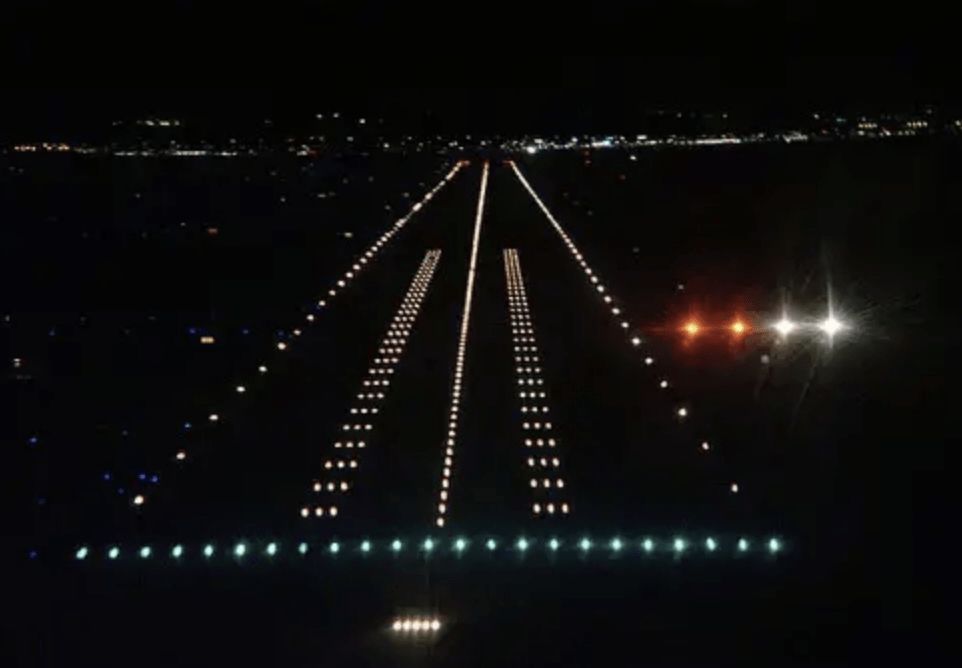PAPI Lights
PAPI lights, which stands for Precision Approach Path Indicator lights, are a system of lights found at many airports to assist pilots during the approach phase of landing an aircraft. The primary purpose of PAPI lights is to provide visual guidance to pilots to ensure they are following the correct glide path for a safe landing. Here’s how they work:
1. **Color Configuration**: PAPI lights typically consist of a series of lights arranged in a row or line, usually next to the runway. These lights are typically color-coded. A standard PAPI system uses four lights, with two on the left side and two on the right side of the runway. The color configuration is typically as follows:
– **Red**: If a pilot sees all four lights as red, it indicates that they are too low and need to increase their altitude.
– **White**: If a pilot sees all four lights as white, it indicates that they are too high and need to descend.
– **Combination of Red and White**: When a pilot sees a combination of red and white lights, it signifies that they are on the correct glide path, ensuring a safe approach angle for landing.
2. **Angle of Descent**: The angle of descent that PAPI lights guide pilots to follow is typically around 3 degrees, which is considered to be a standard approach angle for many runways. This angle ensures that the aircraft is on a proper descent path for landing.
3. **Visibility**: PAPI lights are especially useful during low-visibility conditions, such as fog or heavy rain, as they provide a clear visual reference for pilots to maintain the correct approach path.
4. **Placement**: PAPI lights are usually installed on the left side of the runway. Pilots can easily see and interpret the color of the lights from their perspective as they approach the runway. This positioning allows pilots to make real-time adjustments to their altitude and descent rate to ensure a safe landing.
In summary, PAPI lights are a valuable aid for pilots during the critical phase of landing an aircraft. They help ensure that the aircraft approaches the runway at the correct angle and altitude, increasing safety, especially in adverse weather conditions.

Sudhakar Pantula is a dedicated Safety Management enthusiast with a wealth of experience in implementing software solutions for HSE (Health, Safety, and Environment) projects. He holds certifications as a Lead Auditor in various ISO standards, including ISO 45001, ISO 14001, ISO 9001, ISO 27001, and SA 8000, showcasing his commitment to quality and safety.
His particular passion lies in Aviation Safety and Security, and he firmly believes in the potential of technology to mitigate risks in this domain. Armed with a degree in Industrial Engineering and boasting a remarkable 25-year career in IT spanning diverse industries, Sudhakar brings a wealth of experience to the table. His track record includes successful stints with start-ups, where he played pivotal roles in their growth and development.
With over a decade of expertise in designing and building enterprise solutions, Sudhakar also excels in crafting customized software tailored to specific industry needs. Sudhakar’s professional journey has spanned various industry sectors, including Petroleum, Heavy Industries, Oil & Gas, Steel, Mining, Banking, Insurance, and Power. Over the past decade, he has been primarily focused on implementing EHS (Environmental, Health, and Safety) systems, a role that has taken him to numerous countries, including the USA, UAE, Australia, Germany, Thailand, and Singapore. His dedication to safety, technology, and innovation continues to drive positive change across industries.

